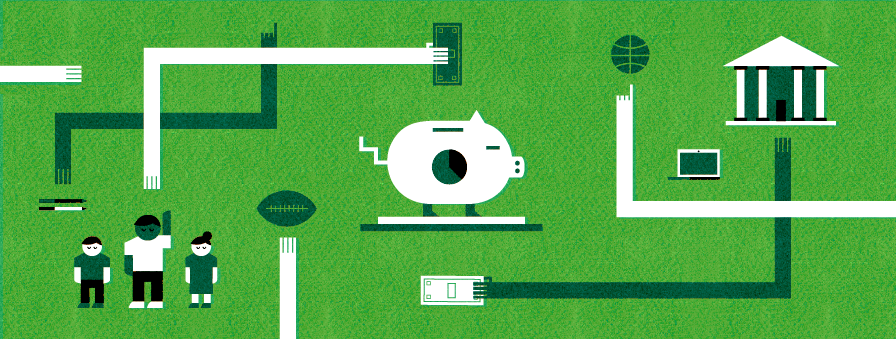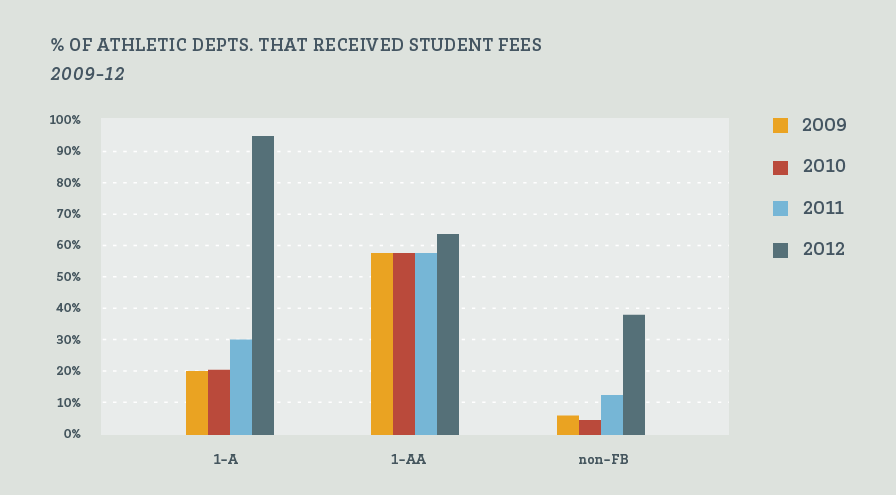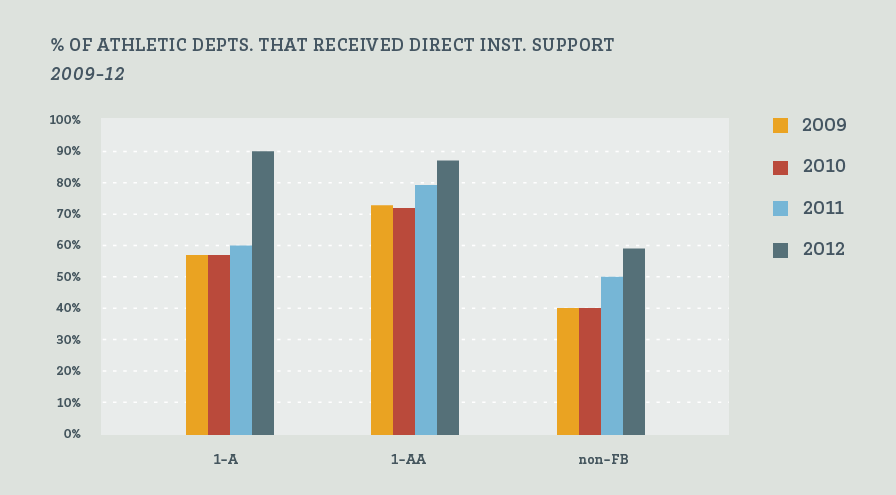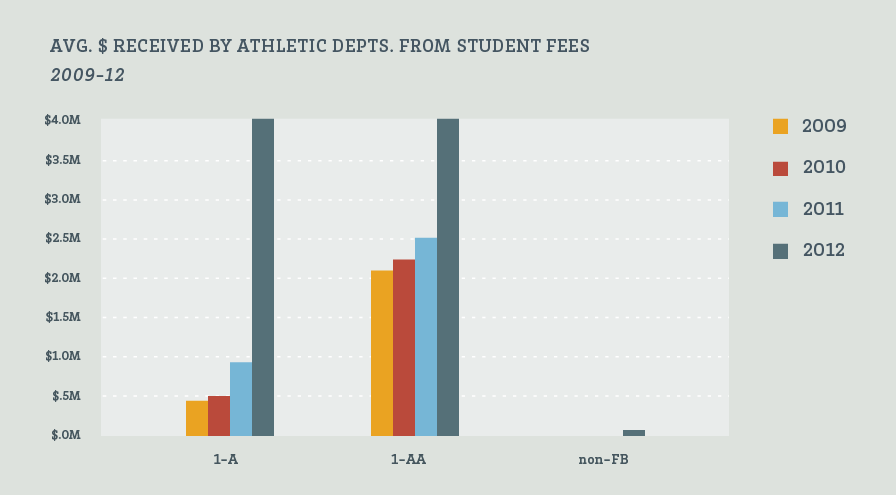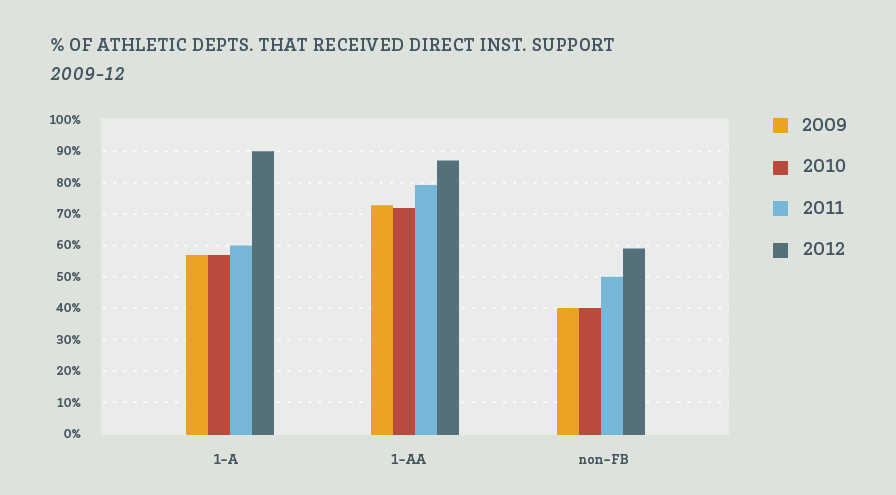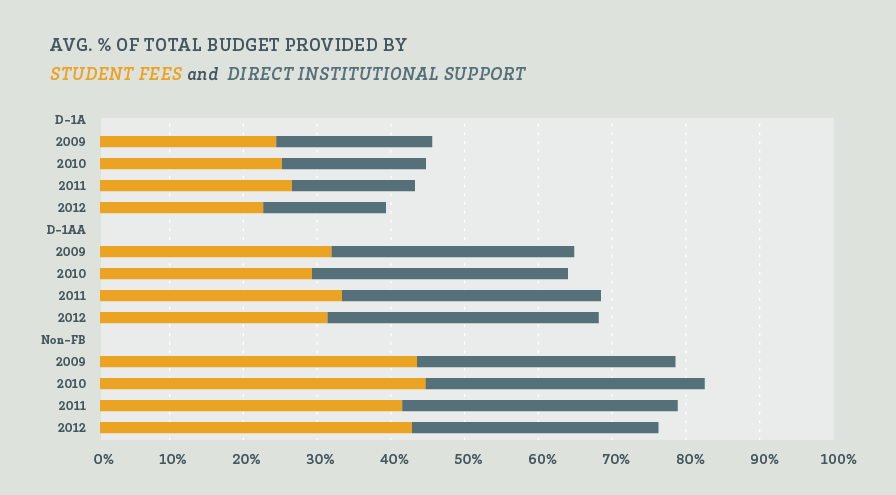When it comes to where athletic departments receive their operating funds, there’s a wide range of sources, two of which we’ve shown would drastically impact whether or not departments operate in the black. Let’s take a closer look at those two institution-based sources, Student Fees and Direct Institutional Support. 1
We studied 220 different institutions, broken roughly into three categories – institutions with D1-A football teams (102), institutions with D1-AA football teams (72), and institutions without football teams (46). 2 We chose this breakdown because there’s a natural gap in revenue between D1-A and D1-AA teams, and a natural gap in expenses between football and non-football fielding institutions. Here’s what we found:
As you can see, there was a major spike in both categories between 2011 and 2012. This increase can be seen in the amount of funding from those sources as well.
For the 102 D1-A institutions studied, those Student Fee averages totaled $83M in 2009 and $404M in 2012, while for the 72 D1-AA institutions studied the increase was from $67M to $198M. For the 46 non-Football schools studied, the increase was from $42M to $134M over the four year span.
The Direct Institutional Support had been higher than Student Fees received in the earlier years, especially in D1-AA, whose athletic departments receive less revenue from other sources but have to support a football program. In D1-AA, the increase went from $133M in 2009, to $226M in 2012, while in D1-A the increase was from $153M to $368M. For the non-Football schools studied, the increase was from $67M to $115M over the four year span.
70 institutions that hadn’t received any Student Fee money on athletics from 2009-2011 started receiving revenue from that source in 2012, and 22 (of the 70) started receiving Direct Institutional Support in 2012 as well. These Student Fee revenues totaled over $363M, and averaged $5.2M per athletic department, with a low of $31,846 (Florida) and a high of $17.8M (Georgia State).
At the same time, 55 of the 220 institutions studied (25%) have never directed Student Fee money to the Athletic Department. Most of these schools are in D1-A, understandable because those schools pull in the most external revenue by a wide margin.
Interestingly, when we examine how much of a percentage of total budget Student Fees and Direct Institutional Support account for, the numbers remain relatively unchanged across all three divisions from 2009-12, not showing the same spike between 2011 & 2012.
This is because while the revenues in those areas have increased dramatically, the expenditures have as well – teams are just investing that revenue back into their programs, rather than stocking it in rainy-day funds. Of the $363 million that the 70 teams taking Student Fee revenue for the first time in 2012 added, those teams increased their budget by an average of 70%.
References:
- We recognize that this information is subject to how each institution defines allocated revenue from student fee or university sources. Accordingly, some schools who receive funds derived from student fees may choose to report those earnings as a lump sum dollar figure categorized as ‘institutional support.’ ↩
- Data from the Win AD Financials database ↩

